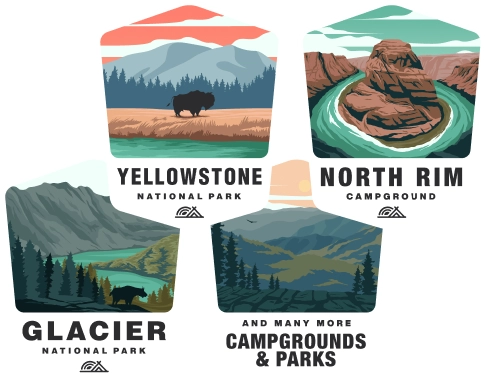Camping at Rogue River-Siskiyou National Forest
Overview
Rogue River-Siskiyou National Forest is a vast expanse of federal land located in southwestern Oregon and extending into California, USA. Known for its diverse ecosystems, it offers a rich tapestry of geological features, plant communities, and wildlife habitats. It encompasses the famed Rogue River, which provides a myriad of recreational activities, from fishing to whitewater rafting.
Camping Options
Developed Campgrounds: The forest has numerous developed campgrounds with varying levels of amenities, such as picnic tables, fire rings, toilets, and sometimes potable water. Reservations for certain campgrounds can be made through the Recreation.gov website, while others operate on a first-come, first-served basis.
Dispersed Camping: For those seeking a more primitive experience, dispersed camping is allowed in many areas of the forest outside of developed campgrounds. This means you can camp for free, but must adhere to Leave No Trace principles and understand that there are no amenities like water, toilets, or trash removal.
Backcountry Camping: For backpackers, the Rogue River-Siskiyou National Forest offers backcountry camping options along its trails. Permits may be required for certain wilderness areas, and it's important to check for any fire restrictions or campsite regulations before heading out.
Campfire Safety
Fire Permits: You may need a fire permit for campfires, stove fires, and charcoal barbecues outside of developed campsites. Always check the current fire regulations before your trip as there can be seasonal restrictions.
Fire Management: Follow all campfire safety guidelines, such as keeping fires small, never leaving them unattended, and ensuring they are completely extinguished before leaving. Be mindful of wildfire danger, especially in the dry summer months.
Protecting the Environment
Leave No Trace: Adhering to Leave No Trace principles is crucial to preserving the natural beauty and resources of the forest. This includes packing out all trash, camping at least 200 feet from lakes and streams, and minimizing impacts on vegetation and wildlife.
Wildlife Safety: Store food properly to avoid attracting bears and other wildlife. Use bear-safe containers or hang food between trees at a safe distance from sleeping areas.
Regulations and Permits
Fishing and Hunting: Licenses are required for fishing and hunting according to state regulations. Make sure to familiarize yourself with the seasons, catch limits, and legal equipment.
Special Permits: Certain areas, like wilderness areas, may require permits for both day use and overnight stays. Additionally, there might be quotas in place to limit the number of visitors to sensitive ecosystems.
Trail Use and Recreation
The Rogue River-Siskiyou National Forest boasts a network of trails for hiking, mountain biking, horseback riding, and more. In winter, some areas offer cross-country skiing and snowshoeing opportunities.
Trail Etiquette: Stay on designated trails to reduce erosion and harm to native flora. Yield to other trail users as appropriate, and keep pets under control.
Water Recreation: The Rogue River provides opportunities for boating, kayaking, and white-water rafting. Permits are required for certain sections of the river to ensure safety and reduce environmental impacts.
Weather and Safety
The climate in Rogue River-Siskiyou National Forest can be quite variable, with wet and mild conditions on the coast and drier, more extreme temperatures inland. Check the weather forecast before your trip and be prepared for sudden changes.
Emergency Preparedness: Always let someone know your itinerary and expected return time. Bring a first-aid kit, a map and compass or GPS, extra food, water, and clothes to cope with unexpected situations.
By being well-informed and practicing responsible recreation, you can ensure a safe and enjoyable camping experience in the Rogue River-Siskiyou National Forest.
